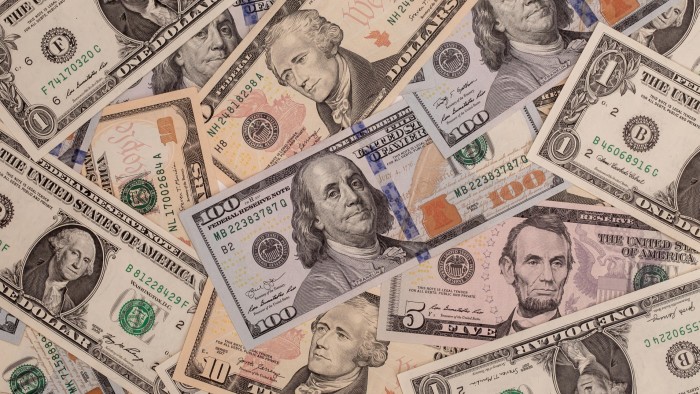A few weeks ago, an interesting paper was presented at a Brookings conference. We didn’t get around to writing about it then, but it turns out that it was both fascinating and SUPER timely.
Here is the abstract of Treasury Market Dysfunction and the Role of the Central Bank:
We build a simple model that shows how the incentives and constraints facing three key types of market players — broker-dealers, hedge funds, and asset managers — interact to create a heightened level of fragility in the Treasury market, and how this fragility can become more pronounced as the supply of Treasury securities increases. After validating a number of the model’s empirical premises and implications, we ask what it can tell us about how the Federal Reserve might best address future episodes of market dysfunction. In so doing, we take as given that an important priority for any Fed response to Treasury-market dysfunction is that it be clearly separated from anything having to do with monetary policy.
OK, yes, unfortunately this is written in typically obtuse academic language that seems to almost deliberately underplay its importance and the pretty novel solutions being presented.
Basically, what Anil Kashyap, Jeremy Stein, Jonathan Wallen and Joshua Younger are arguing is that the US Treasury market has grown far larger than the ability of banks to efficiently intermediate. At the same time, there’s been a huge boom in extremely-leveraged Treasury trades by hedge funds, mostly funded by short-term wholesale lending markets, like repo (you can find a bestiary of some of these trades here).
The combination makes the US government debt market “inherently fragile” and ramps up the danger “of market dysfunction and financial instability”, they write.
If this sounds familiar it’s because this is precisely what it looks like has happened in the Treasury market over the past week. An exogenous shock — the Trump administration’s new tariff regime — sparked a spike in volatility that rippled through markets. Eventually it hit the Treasury market, tripping up many of these highly leveraged trades and sending yields rocketing when they would normally be falling in an environment like this.
So far it seems the main culprit in this latest bout of Treasury turmoil might be swap spread trades rather than the Treasury basis trades that the Brookings paper mostly deals with. But the fact that Treasuries are selling off again now — despite president Trump hastily pausing his more extreme tariffs — suggests that the turbulence isn’t over, and could be morphing.
Which is why Kashyap, Stein, Wallen and Joshua Younger’s suggestion for how the Federal Reserve can handle these kinds of Treasury tempests is so interesting — and possibly timely. Here are some of the more conventional fixes offered up since this topic erupted on the agenda after March 2020:
1) Freeing up banks to absorb pressures by scrapping regulations like the “supplementary leverage ratio”;
2) Imposing fixed minimum margins for repo-financed Treasury purchases to limit how much leverage can be deployed;
3) Mandated central clearing of Treasury trades;
4) Pushing the Treasury market towards all-to-all trading;
4) Establishing some kind of permanent Fed repo facility for hedge funds.
However, Kashyap et al are sceptical that any or all of these will prove sufficient when these trades are being unwound in a disorderly fashion. They point out that the Fed did temporarily exclude Treasuries from SLR calculations in March 2020, but it still took mammoth amounts of Treasury purchases to quell the turmoil.
The paper therefore makes an alternative solution. Alphaville’s emphasis below:
The key observation is that the fire sale by hedge funds, which in turn creates the severe strain on dealer balance sheets, is not just an outright liquidation of Treasury securities. Rather, it is an unwinding of a hedged long-cashTreasuries/short-derivatives position. Thus, to relieve the stress on dealers, it would be sufficient for the Fed to take the other side of this unwind, purchasing Treasury securities, and fully hedging this purchase with an offsetting sale of futures; this is in effect a more surgical approach to bond buying. The blunter policy of simply buying unhedged cash bonds from the dealers — i.e., taking duration risk off their hands — does not provide them with any extra relief relative to this hedged approach, as they tend not to have any duration exposure in the first place.
In other words, the Fed would both buy Treasuries and sell futures, in practice putting on a basis trade of its own!
A standing “basis purchase facility” may seem a bit outlandish, but as Kashyap et al point out, there are a lot of advantages to this approach, and not as big a divergence from the central bank’s long-existing operations as you might think. Alphaville’s emphasis again in bold:
A primary advantage of the Fed taking this hedged approach to bond-buying is that it avoids the need to pre-specify an unwind date for the policy. It has been argued . . . that an important imperative for market-function bond purchases is that they be clearly distinguished from monetary-policy-motivated purchases. Duffie and Keane (2023) suggest that one way to do so is to require the central bank to commit in advance to liquidating securities when market functionality is sufficiently restored.
However, it can be challenging for the central bank to commit in advance to a fixed schedule for liquidating bonds, to the extent that it does not know how long a period of market stress will last. Our hedged-purchase approach effectively finesses this problem by embedding the duration-neutrality, and hence the crucial distinction from monetary policy, in the short derivatives position. This eliminates the need for the Fed to specify when it will begin selling bonds and allows it to keep helping with market function for as long as needed, without inadvertently generating any signal about the stance of monetary policy.
Shorting futures alongside purchases of bonds is also consistent with the Fed’s current playbook. The Fed regularly engages in repo transactions, either through standing facilities or temporary open market operations. Like the closing leg of a repo, futures represent a contractual agreement to sell securities on a future date at a price agreed to at the time of trade. Basis trades of the sort we have in mind involve a spot purchase and future sale. This makes them conceptually very similar to repo transactions, with the key difference between the two being different counterparties for the purchase and sale.
The obvious rejoinder to this is to point out that this is basically a hedge fund bailout facility — transforming an implicit assumption that the Fed would step in if Treasury markets are breaking into an explicit, formal promise.
This is an obvious moral hazard. Emboldened by knowing that the Fed would pick up their basis trades if things break bad, hedge funds could pursue the strategy with even more reckless zeal.
The paper has two rejoinders to this. The first is that moral hazard is already an issue, thanks to the Fed’s previous actions, and that basis trade purchases are at least duration-neutral and therefore less distortive. The second is a bit more subtle:
Suppose hedge funds conjecture that the Fed will step in with certainty and take the arbitrage trade off their hands when the spread widens by a given amount. With this source of tail risk eliminated, we might expect them to trade more aggressively ex-ante. In the limit where they become risk neutral and there is perfect competition, this more aggressive behavior will drive the Treasury-futures basis x, and hence expected hedge fund profits, to zero.
It is of course true that there will still be states of the world where the Fed has to take over a potentially large hedge-fund book, but if the Fed is perfectly hedged with respect to interest rate risk, and given that it can never be forced out of its position prematurely, the social cost of having to assume this hedged position is arguably negligible. Thus in this limit case, the policy creates no distortions with respect to the pricing of interest-rate risk, eliminates hedge-fund arbitrage profits, and imposes no costs on the Fed or society as a whole. In other words, there is no moral hazard effect to speak of.
How likely is this? We have no clue. But Stein is a former Fed governor, Younger is a former senior policy adviser at the New York Fed, and all the authors are all highly respected and influential in their fields. If you want more on the topic, here is Kashyap presenting the paper at the Brookings conference:



















